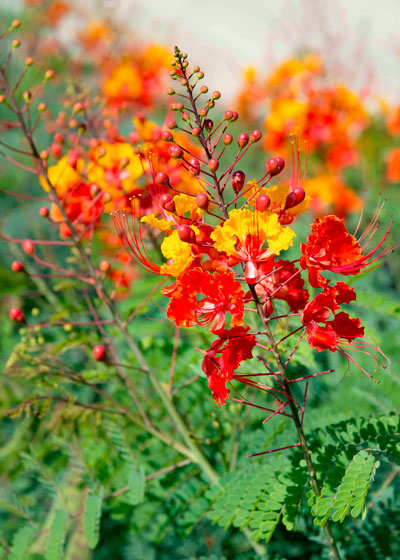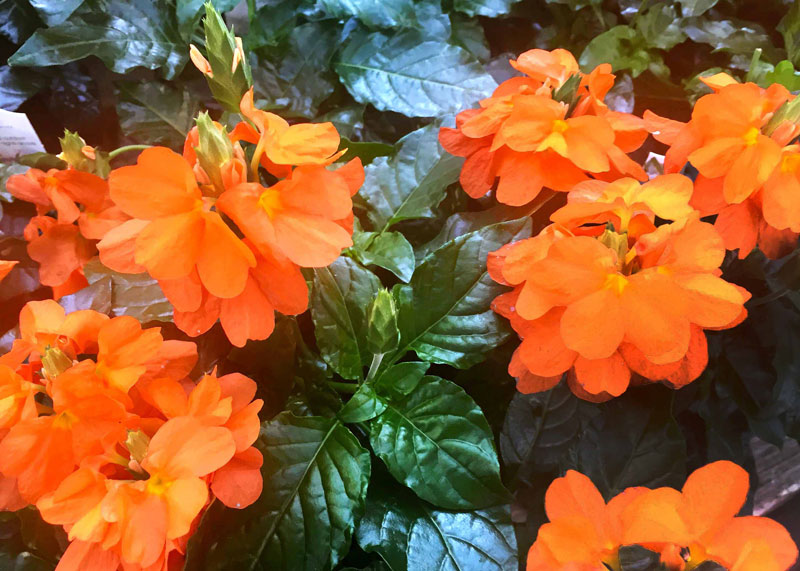A pretty shade of the fall
As a kid growing up in College Station my mom and dad always told me how lovely fall colors were in the Midwest and Northeast. (They grew up in Nebraska.) But until I transferred from A&M to Ohio State, I never really realized it. October and early November were sights to behold, and I’m glad I had that opportunity.
Here in Texas we import our color from other sources. Tropical plants serve us well, and this week I’m going to mention a few orange plants. We delved into crotons last week, and cannas have been on our lists here before. Both bring us dazzling oranges, among other shades.
No oranges, however, out-perform Pride of Barbados, Orange Jubilee Esperanza and my own personal favorite, crossandra. I give each a 5-star review.

Pride of Barbados
I’ll start with this one, since I get more questions about it than all the other orange plants combined. It’s the closer of the two orange-flowering beauties in the upper photo.
Also called red Mexican bird of paradise, it’s botanically Caesalpinia pulcherrima. You’ll see it frequently in the southern half of Texas (although my photo is from North Central Texas). It’s used with great abundance in Austin and San Antonio and southward, and Tiger Swallowtails abound around it.
It’s winter-hardy most years in South Texas, less so farther north. It loves the heat (or it wouldn’t be growing in highway medians).

Orange Jubilee Esperanza
Farther east in the median in the top photo you see Orange Jubilee Esperanza. It’s now given its own species name, Tecoma alata according to Arizona State University. That sets it apart from Gold Star Esperanza, a long-proven and highly popular Texas favorite that’s a selection of Tecoma stans.
Orange Jubilee grows to be 4 to 6 feet tall and wide (larger toward the Gulf Coast, and its trumpet-shaped flowers keep coming all summer and way into the fall.

Crossandra
You won’t find this one growing outdoors very often. I came across one planting of it in a bed in Allen early this past May, and it was already beginning to struggle. I haven’t been back to check on it since. It’s more of a patio pot that you grow on a table or use to decorate an entryway.
Crossandra leaves are incredibly glossy and dark green, and the graceful floral spikes are the color of cooling orange sherbet. It blooms for weeks at a time, then more spikes are sent up to continue the show.
Keep crossandras in bright light indoors, but out of direct mid-day and afternoon sunlight when you put them outside during the hot weather.
Keep crossandras moist at all times, and use a high-nitrogen, water-soluble plant food to nourish them, applying it every month or so during the growing season. Protect them from temperatures below 40F by bringing them onto a bright window in the bathroom or kitchen. Given good growing conditions they will continue to produce flower spikes for many months.


